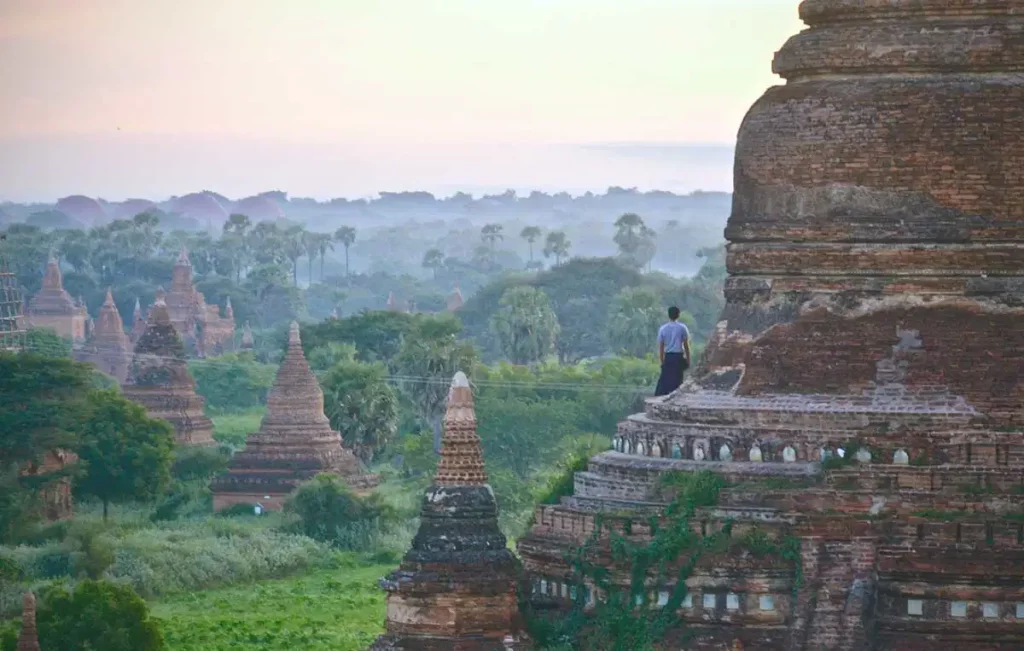For many travelers, visiting sacred sites around the world offers a unique opportunity to connect with the culture, history, and spirituality of a region. In countries like Myanmar and Thailand, the experience of exploring their awe-inspiring temples can be transformative, providing more than just a glimpse into the past. These temples, ancient and serene, are not only cultural landmarks but also embody deep spiritual significance, offering visitors a chance for reflection and personal growth. From the mystical temple complex of Bagan in Myanmar to the iconic structures of Wat Pho and Wat Arun in Thailand, the journey to these sacred places may just change your perspective on life.
The Spiritual Significance of the Temples in Myanmar and Thailand
Temples are an intrinsic part of the cultural and spiritual fabric of both Myanmar and Thailand, countries where Buddhism plays a central role in everyday life. For centuries, these sacred places have been centers for prayer, meditation, and community. The striking beauty of the temples, along with their deeply spiritual significance, makes them a must-visit for those seeking not only to learn about the region’s history but also to engage with its profound religious traditions.
Both Myanmar and Thailand are home to numerous temples that reflect the rich Buddhist heritage of the region. However, it’s the unique architectural styles and the serene environments of these temples that set them apart. Whether you’re wandering through the thousands of temples in Bagan or meditating in the peaceful courtyards of Wat Pho, these sacred sites offer more than just a tourist experience—they provide an opportunity for personal reflection, inner peace, and a connection to something greater than oneself.
Myanmar’s Bagan: The Magical Allure of Bagan’s Temple Complex
One of the most awe-inspiring places in Myanmar is the ancient temple complex of Bagan. Spread over an area of more than 40 square miles, Bagan is home to over 2,000 temples, pagodas, and monasteries, making it one of the world’s most remarkable religious sites. The sheer number of temples and the sprawling beauty of the landscape can be overwhelming, but there’s a magical serenity that emanates from the temples of Bagan.
The Ancient Wonder of Bagan
Bagan was the capital of the Pagan Kingdom from the 9th to the 13th century, and it’s here that you’ll find some of the most impressive architectural feats in Southeast Asia. The temples in Bagan, such as the Ananda Temple, the Shwezigon Pagoda, and the Dhammayangyi Temple, are not just architectural masterpieces—they are also active centers of spiritual practice for the local community. Walking through the dusty paths, surrounded by thousands of pagodas, you’ll feel as though you’ve stepped back in time to an era where spirituality and the search for enlightenment were at the core of daily life.
What makes Bagan particularly special is the contrast between the temples and the vast, open landscape. Visitors can take in breathtaking views of the temple-dotted plains, particularly at sunrise or sunset when the temples are bathed in a golden light. Many visitors opt to take a hot air balloon ride to capture the full scale and beauty of the site, but even from the ground, the experience is otherworldly.
Spiritual Connection in Bagan
While the architecture is certainly stunning, it’s the spiritual atmosphere of Bagan that often has the most lasting impact on visitors. It’s a place that invites contemplation and stillness. The temples of Bagan are a sanctuary for those seeking a deeper connection to the sacred and an opportunity to reflect on life’s bigger questions. Whether you’re meditating in one of the temple courtyards or simply sitting in silence and watching the golden glow of the sun rise over the pagodas, there’s a sense of peace that can wash over you.
The people of Bagan continue to maintain their Buddhist practices, and visitors may witness monks walking the dusty streets, collecting alms, or pilgrims offering prayers at the shrines. For those seeking spiritual fulfillment, Bagan is a place where the world’s noise falls away, leaving only the whispers of wisdom that have echoed through these temples for centuries.
Thailand’s Wat Pho and Wat Arun: Exploring the Tranquil Temples of Thailand
While Myanmar’s Bagan offers an unparalleled experience in terms of temple complexes, Thailand is home to some of the most famous temples in Southeast Asia. Among the country’s numerous sacred sites, Wat Pho and Wat Arun in Bangkok stand out for their history, grandeur, and tranquil atmospheres.
Wat Pho: The Temple of the Reclining Buddha
Wat Pho, also known as the Temple of the Reclining Buddha, is one of the oldest and largest temples in Bangkok. It is home to the famous reclining Buddha statue, which measures a staggering 46 meters in length and is covered in gold leaf. The sight of the Buddha, reclining in a peaceful state, is mesmerizing, and it invites visitors to contemplate the meaning of rest, peace, and surrender.
But beyond its famous statue, Wat Pho is also an important center for Thai traditional medicine and massage. The temple houses a school for traditional Thai massage, and many visitors choose to indulge in a rejuvenating treatment after exploring the temple grounds. The serene atmosphere of the temple, coupled with the peaceful sounds of monks chanting, creates a calm and spiritual environment perfect for meditation and reflection.

Wat Arun: The Temple of Dawn
Located on the banks of the Chao Phraya River, Wat Arun (the Temple of Dawn) is one of Thailand’s most iconic and visually stunning temples. Known for its towering spires, decorated with intricate porcelain, Wat Arun glows in the morning light, giving it a spiritual aura that is hard to match. The temple is particularly breathtaking during sunrise, when the spires are bathed in a soft, golden light.
Climbing the central spire of Wat Arun offers an incredible view of Bangkok’s skyline and the surrounding river, and it’s a moment of peace and reflection amid the hustle and bustle of the city. As you gaze out over the water, you can’t help but feel a sense of serenity and awe.
Spiritual Experience: How Visiting These Temples Can Offer a Deeper Cultural Connection
The temples of Myanmar and Thailand are not just architectural marvels or tourist destinations—they are spiritual havens that offer something far more profound. Whether you are deeply spiritual or simply seeking to connect with the culture of these countries, the act of visiting these sacred spaces can be an eye-opening experience. Here’s why:
A Chance for Reflection and Mindfulness
Both Bagan and the temples of Thailand offer a unique environment where visitors can disconnect from the chaos of daily life. In these temples, the noise of the world falls away, replaced by a sense of inner peace and stillness. As you wander through the grounds, meditate in the temples, or simply sit and observe the peaceful rituals taking place, you are invited to reflect on your own life and the bigger questions of existence.
Connection to Ancient Traditions
Both Myanmar and Thailand have long histories of Buddhist practice, and their temples are repositories of this ancient wisdom. By visiting these sacred spaces, you can connect to a tradition that has been passed down through generations, and through your exploration, you may gain insight into the deeper meaning of life. Whether it’s learning about the symbolism of the Buddha statues or understanding the significance of the temples in local spiritual practices, these places offer an immersive experience in ancient traditions that can leave a lasting impression.
Experiencing the Present Moment
The temples of Bagan, Wat Pho, and Wat Arun are living temples, still used by local communities for prayer, meditation, and religious ceremonies. Visiting these places allows you to witness the ongoing spiritual practices of the people who live here, reminding you that spirituality is an active part of life, not just a thing of the past. By participating in a prayer or offering incense, you become part of the experience, and you may leave with a renewed sense of mindfulness and presence.
Conclusion
Exploring the temples of Myanmar and Thailand offers more than just an opportunity to appreciate stunning architecture—it provides a chance for personal reflection, spiritual growth, and cultural connection. From the timeless beauty of Bagan’s temples to the serene elegance of Wat Pho and Wat Arun, these sacred sites offer something that transcends the usual tourist experience. Visiting these temples is an invitation to slow down, be present, and connect with something greater than ourselves. Whether you’re seeking peace, perspective, or simply a deeper understanding of the world around you, these temples provide an experience that can indeed change your perspective on life.





















